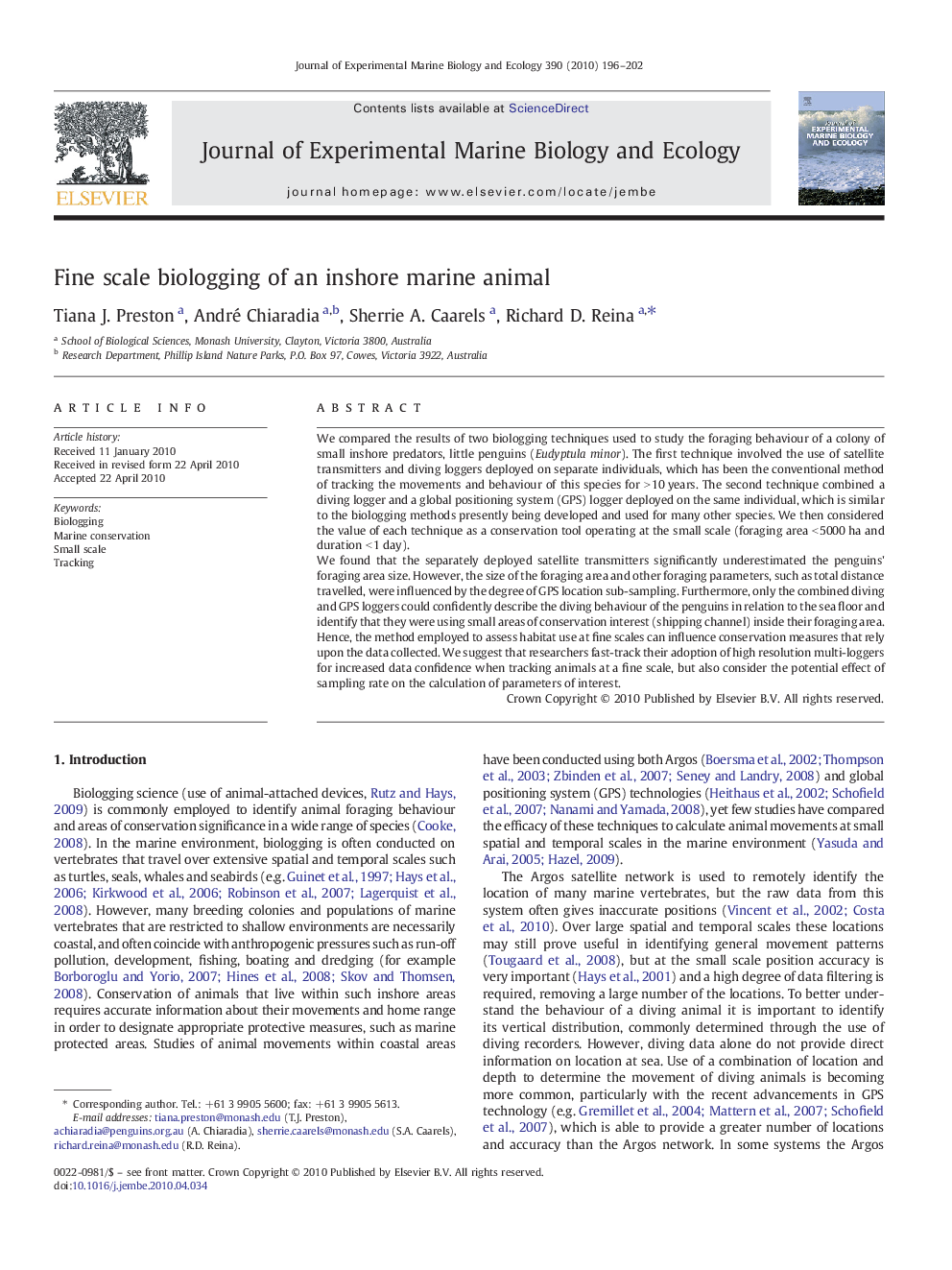| کد مقاله | کد نشریه | سال انتشار | مقاله انگلیسی | نسخه تمام متن |
|---|---|---|---|---|
| 4396540 | 1618470 | 2010 | 7 صفحه PDF | دانلود رایگان |

We compared the results of two biologging techniques used to study the foraging behaviour of a colony of small inshore predators, little penguins (Eudyptula minor). The first technique involved the use of satellite transmitters and diving loggers deployed on separate individuals, which has been the conventional method of tracking the movements and behaviour of this species for > 10 years. The second technique combined a diving logger and a global positioning system (GPS) logger deployed on the same individual, which is similar to the biologging methods presently being developed and used for many other species. We then considered the value of each technique as a conservation tool operating at the small scale (foraging area < 5000 ha and duration < 1 day).We found that the separately deployed satellite transmitters significantly underestimated the penguins' foraging area size. However, the size of the foraging area and other foraging parameters, such as total distance travelled, were influenced by the degree of GPS location sub-sampling. Furthermore, only the combined diving and GPS loggers could confidently describe the diving behaviour of the penguins in relation to the sea floor and identify that they were using small areas of conservation interest (shipping channel) inside their foraging area.Hence, the method employed to assess habitat use at fine scales can influence conservation measures that rely upon the data collected. We suggest that researchers fast-track their adoption of high resolution multi-loggers for increased data confidence when tracking animals at a fine scale, but also consider the potential effect of sampling rate on the calculation of parameters of interest.
Journal: Journal of Experimental Marine Biology and Ecology - Volume 390, Issue 2, 31 July 2010, Pages 196–202